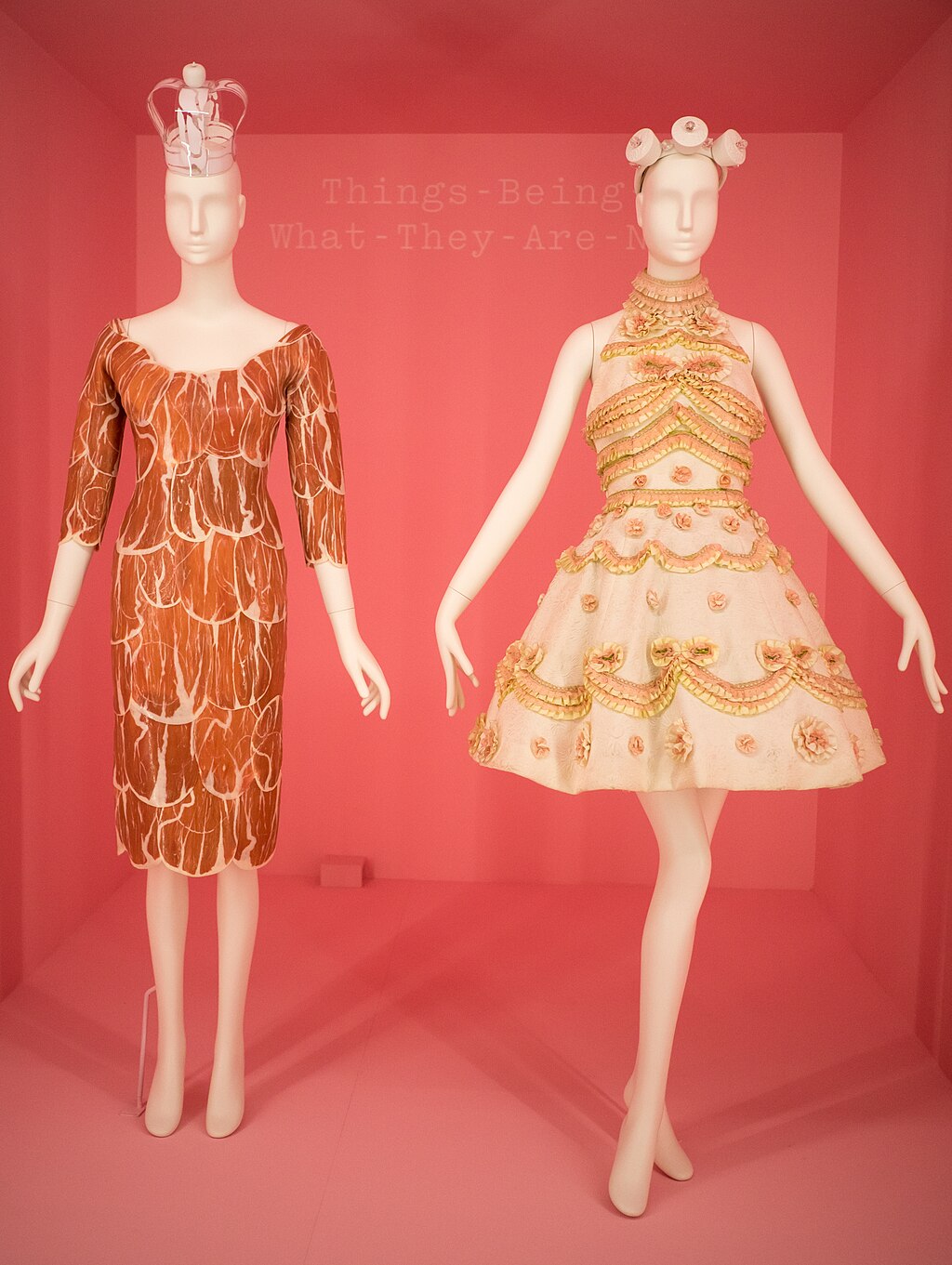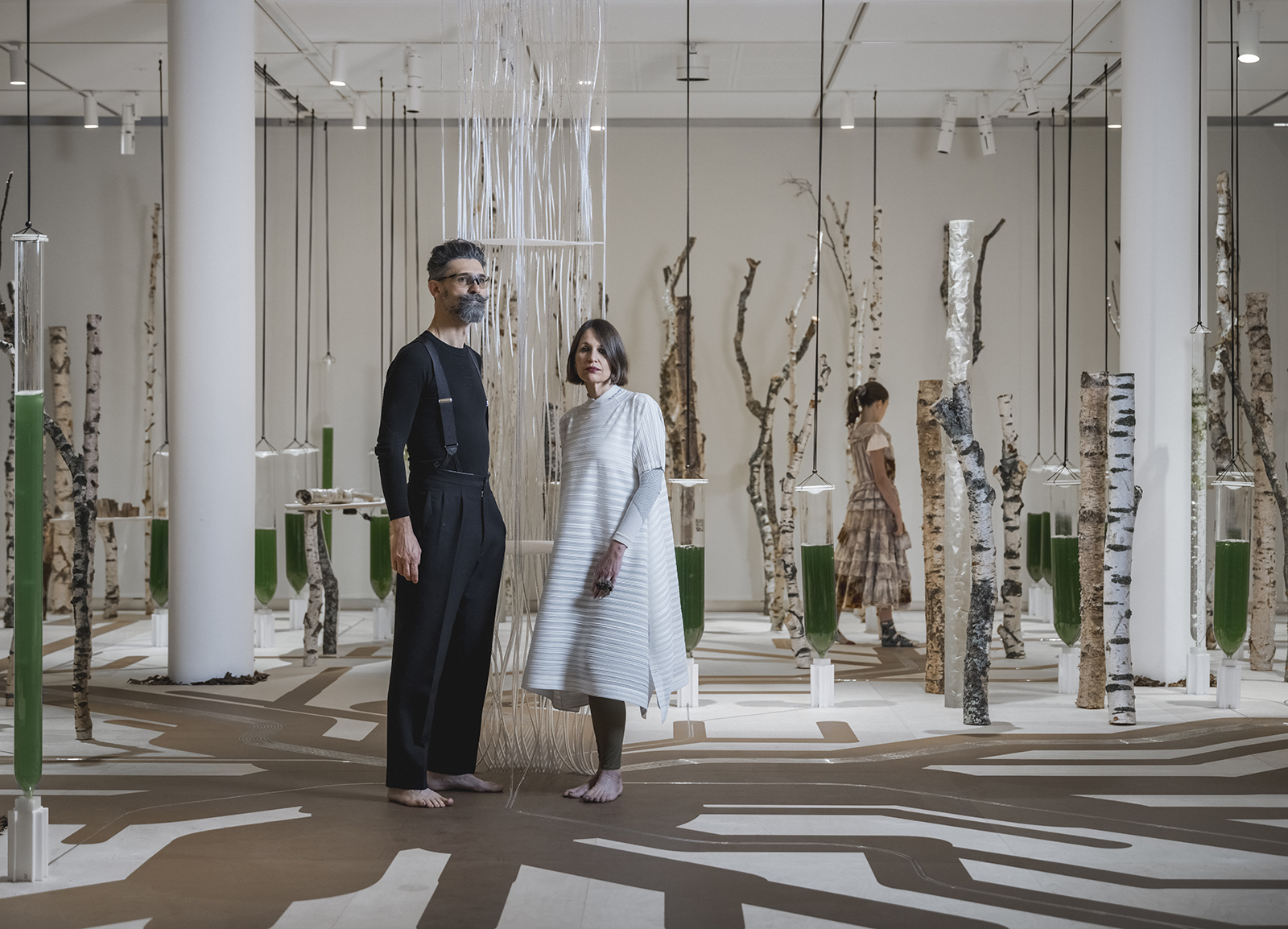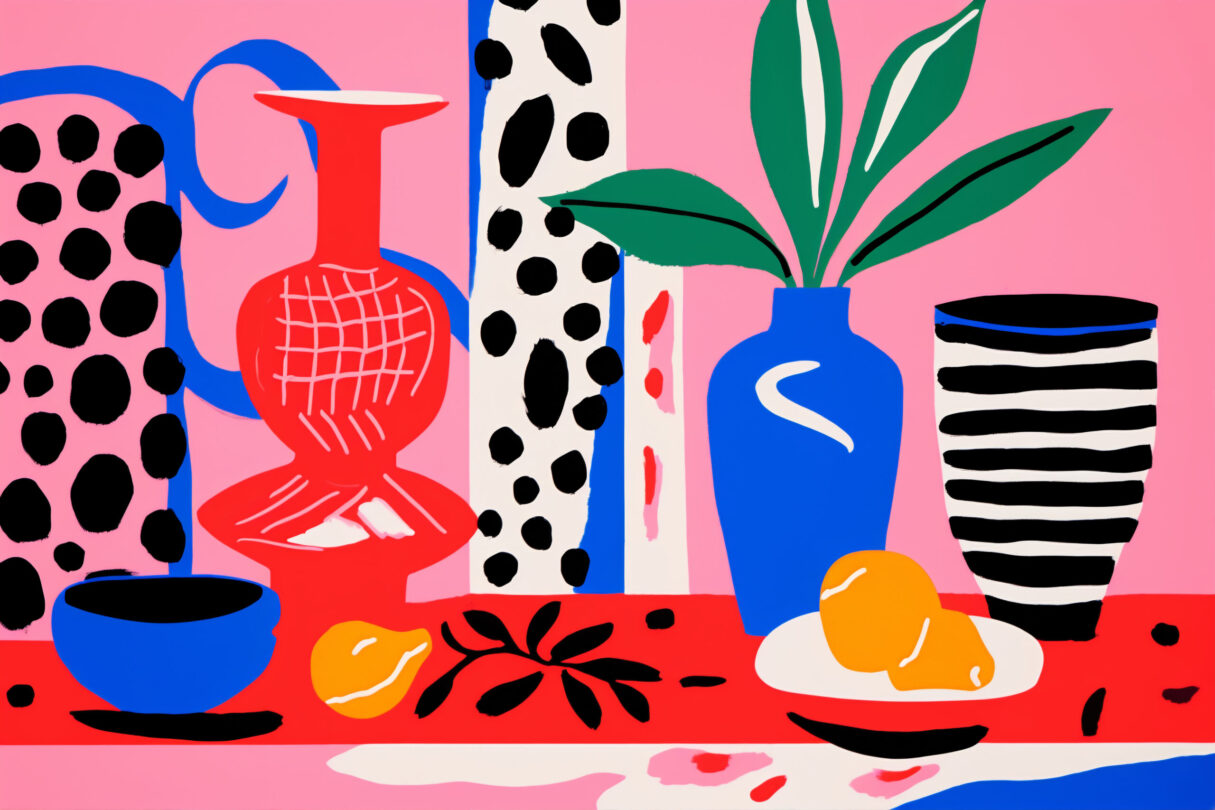I know… nobody wants to hear or read the word “pandemic” in 2024. But for today, it appears in a different context. I’m sure that everyone reading this is going to be fond of the picture I’m painting now. It is the early 2020s. Everyone has too much time on their hands. People are locked up and uncertain about what is going on in the world. Uncertain about the next day, left alone for the weeks and months ahead.
Header Image: "Camp - Notes on Fashion at the Met" - Jeremy Scott and Christian Lacroix.
So good, so far: this state is often referred to as “uncertainty” in epistemological philosophy. It is extensively described by philosopher Ludwig Wittgenstein in his well-known book On Certainty. Uncertainty was thrust into our collective lives in an unprecedented way, leading us to crave its opposite: stability. Doom-scrolling through our social media feeds, binge watching TV Shows and isolation. A clear trend emerged across various aspects of daily life: simplicity and reduction to the essentials. From interior design to color palettes to fashion, a particular aesthetic appealed to us as a collective—it seemed to capture the zeitgeist. It’s no coincidence that this trend took off at the start of the pandemic.
The Illusion of Certainty
As humans, we have an inherent desire for certainty and mastery of the world. However, uncertainty is an intimate, everyday reality. There are two dimensions to this state of uncertainty: the personal, which raises questions like “Who am I?” and “What is my purpose?”—and the global, with larger, existential uncertainties.
At the start of this decade, both dimensions collided aggressively in our daily lives. Sure, everyone had their personal sphere of uncertainty. Now, a global phenomenon crashed into our existence and changed our understanding of life as we knew it. For many, especially Gen Z (of which I am a part), this level of uncertainty was unprecedented.
The collision of personal and global uncertainties, along with the time to (over)analyze our personal situations, led us to cling to certainties. As Wittgenstein wrote in On Certainty (1969), “we build nests of predictability.” Doubts arise on the basis of assuming things to be fixed, certain, and settled. To doubt yourself requires a foundation of self-certainty. A child learns by trusting the adult, suspending doubt, which only comes later.
Armoring Ourselves
To withstand uncertainty, we arm ourselves with unshakeable beliefs and cocoon ourselves in familiar routines. We get out of bed the same way each morning. Make tea or coffee the same way. Send similar text messages and organize our lives in predictable ways. Wittgenstein’s philosophy helps explain the rise of minimalist, clean, understated fashion during the pandemic. Our social media feeds were filled with beige, minimalist homes, with little room for chaos. A reflection of the desire for stability in an uncertain world? As Wittgenstein said, we armored ourselves with stability, when stability was far from being guaranteed.
Architecture and fashion often move in parallel ways, so the simplicity and predictability we sought were also reflected in fashion. Terms like “quiet luxury” emerged. Runways (when they could resume in person) showcased practicality in both clothing and settings. Brands like The Row, Phoebe Philo, and Totême rose to prominence. The color of 2021, “ultimate gray” paired with a “yellow hue,” was meant to symbolize unity, stability and hope.
We armored ourselves psychologically with daily routines and mantras, but we also metaphorically armored ourselves through our clothing choices. Amidst the clutter, chaos and unpredictability, we craved the antidote—stability and simplicity. Examples from the runway include Salvatore Ferragamo’s SS21 minimalist, harmonious utilitarian aesthetic, Prada’s SS22, which was described as “urgent feelings of utopia and normality,” and Miu Miu’s FW2022.
Shattering the Armor
As time progressed and life began to normalize, the market and our feeds became oversaturated with minimalism. This triggered a craving for the opposite: a shift toward something lived-in, reflecting the chaos of the real world. By 2023, we had become saturated with minimalism, which had been pervasive throughout the pandemic. Pre-pandemic, fashion was characterized by loudness and logomania, exemplified by brands like Supreme and Gucci. Alessandro Michele’s work at Gucci was one of the best examples of maximalism, pushing a hedonistic trajectory in fashion and culture.
The pandemic seemed to be the perfect time for everyone to cleanse, reflect, and restart. However, in addition to Wittgenstein’s theory of armoring during uncertainty, oversaturation of a particular aesthetic can also drive cultural shifts toward its opposite.
Reflecting on the Post-Pandemic
Now, in 2024, a decade after the cycle began, we’ve come full circle. There is a collective shift toward embracing the busy, chaotic, and “on-the-go” vibe once again. Miuccia Prada’s Miu Miu SS24 collection embodies this shift. Overly cluttered bags, mashed-up outfits combining evening wear, swim trunks, and tailored clothing—all represent life’s detritus. These exploding bags symbolize the multi-layered aspects of life, with excess and fun taking center stage.
Camp: The Resurgence of Extravagance
Excess, extravagance, and fun are all part of a cultural movement that never truly disappeared. It’s now returning to the forefront of our collective consciousness: camp. I’m not talking about the camping trips some of us endured in our youth, now glamorized as “glamping.”

No, I’m talking about camp as a cultural phenomenon—a movement, a state of being, a way of life. Camp can be described as an exaggerated act of being. It’s linked with theatricality, performance, extravagance, and an essence of fabulousness. Camp is often associated with “bad taste” in the public eye and holds an ironic value.
The History of Camp
In Susan Sontag’s famous 1964 essay Notes on ‘Camp’, she describes camp’s key attributes. These include artifice, frivolity, naive middle-class pretentiousness, and shocking excess. This is done in a manner so extreme that it has a perversely sophisticated appeal.
Camp is closely tied to gay culture. The first official definition dates back to 1909 in the Oxford Dictionary. It described camp as “ostentatious, exaggerated, affected, theatrical, effeminate and homosexual.” Before this, in 1870, British cross-dresser Frederick Park reflected on his “campish undertakings” in love letters exchanged with Ernest Boulton. They performed together in flamboyant, excessive clothing at cabarets and theaters around London. The police eventually noticed them. After searching their apartment, officers found letters and items that couldn’t be easily understood by the jury. This led to both their acquittal. Christopher Isherwood also described camp in his 1954 novel The World in the Evening.
It’s important to distinguish between camp and kitsch. While both can apply to art, literature, music, or any object with aesthetic value, camp refers to the mode of performance. And became a way of being or living. Kitsch, on the other hand, refers to the work itself, not the person bringing it to life.
Camp in Fashion
So what is camp in fashion? To understand camp in fashion, it’s important to grasp its cultural heritage, which formed in multilayered diasporas. In the context of fashion, camp began to take shape in the 1920s and 1930s. Groups like the “Bright Young Things” in London, who helped deconstruct gender norms, played a significant role in pushing camp forward.
At the same time, the “flapper” movement among women challenged camp in a different way by breaking free from skirts, long hair, and corsets. Fashion wasn’t just decoration for the oppressive male-dominated patriarchal system; it became a form of self-expression and liberation, pushing camp into high culture.


You can’t discuss camp without acknowledging how important Black and queer, trans culture is to its history. The New York-based ballroom movement is essential to camp. Paired with the Voguing scene, ballroom culture embodies the core of camp: theatricality, dance, self-enactment, cross-dressing, and posing. Voguing combines the poses of Golden Hollywood and mid-century haute couture. Its roots lie in the Harlem ballroom scene, which emerged during the Harlem Renaissance in the 1920s.
The Relevance of Camp for the Marginalized
Ballroom culture was—and still is—an important outlet for Latinx and African American members of the LGBTQIA+ BPoC community. They imitated the “coming out balls” of Manhattan’s high society. Dressing up was an empowering act, as can be seen in the 1990 documentary Paris is Burning.

Susan Sontag’s Notes on ‘Camp’ further elaborates on how camp uses irony, humor, parody, and artifice to communicate messages through fashion. Camp fashion disrupts the exclusivity of luxury, as it was appropriated as an act of rebellion by Black communities. Clothing loaded with splendor proved that opulence and extravagance could exist outside of white high society.
Drag is the definition of camp in queer culture, displaying its core over-the-top attitude. Queer Trans People of Color (QTPoC) have long been at the forefront of camp, particularly in the fashion world. From ballroom culture to interdisciplinary performances by icons like Josephine Baker, Grace Jones, and RuPaul, QTPoC have driven camp forward. Black camp is inspired by 1970s funk, Caribbean carnival costumes, and “pimp” fashion. Notable examples include Bootsy Collins and Chaka Khan.
Fashion as a Political Outlet for Marginalized Groups
Fashion has long been a form of resistance against societal expectations. It’s no surprise that marginalized groups, especially QTPoC, use experimental expression to harness collective queer power. James Baldwin famously stated in his 1960 essay They Can’t Turn Back that it took him years to purge himself of the “filth” he had been taught about himself. He needed to do this before he could live fully in his own right.
In a world that discourages uniqueness and enforces binary ideals, it’s crucial for QTPoC to prioritize freedom and creative expression. Throughout history, QTPoC have often had to alter their aesthetic expression for the sake of safety and acceptance. Forming subcultures like the ballroom scene was an act of necessity. It provided shared identity, support, and exploration.

By belonging to a subculture, its fashion already deviates from conventional norms, placing it within the realm of queer politics. Even something as simple as a T-shirt can uplift queer voices. This was evident during the AIDS epidemic. Activists wore white shirts with pink inverted triangles (which Nazis used to identify homosexuals) to fight stigma.
For many QTPoC, openly expressing their creativity through fashion is too dangerous, making the power of creativity born from suppression all the more meaningful. In camp’s flamboyant, artificial, exaggerated way of being, marginalized groups can perform and visualize their creativity, deviating from the conventional and asserting their uniqueness.
A Post-Pandemic Craving for Camp
Culturally, we’ve just come through a life-altering event, so it makes sense that, as a collective, we now crave a visual shift as well. But the underlying reasons behind our post-pandemic craving for camp go far beyond a reaction to oversaturation or a longing for stability. In times of radical change following global events, it’s more than plausible that we now want to use clothing as an armor, a tool for fighting for individual needs in a newly dynamic world.

Camp reflects the over-the-top, exaggerated situations we encounter daily in a post-pandemic world, where change happens at a pace rarely seen before. Camp showcases the elaboration of life’s extremes like no other movement, potentially bringing the importance of self-expression to the forefront of the collective consciousness during a time of resurfacing oppression worldwide.
















You must be logged in to post a comment.